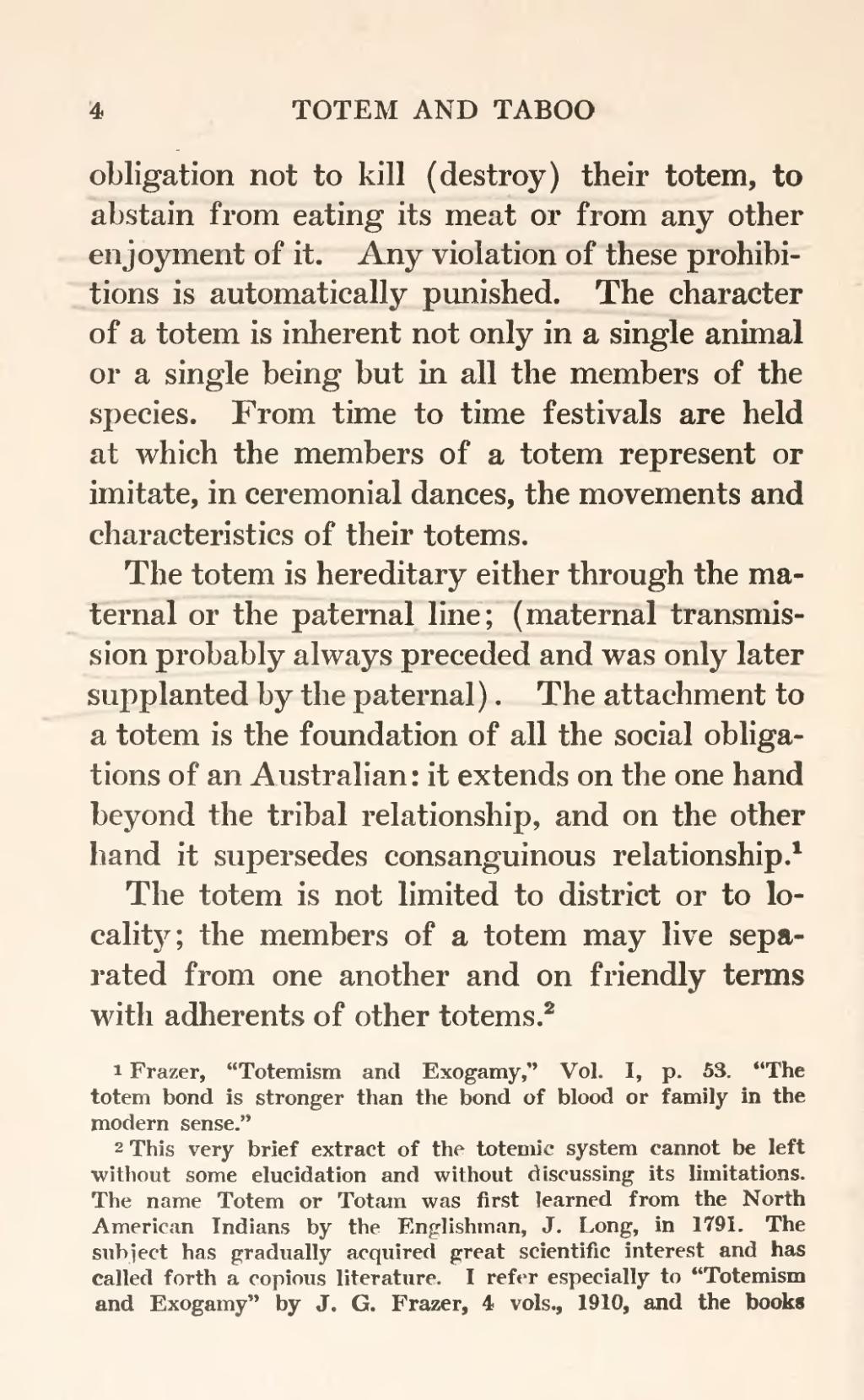obligation not to kill (destroy) their totem, to abstain from eating its meat or from any other enjoyment of it. Any violation of these prohibitions is automatically punished. The character of a totem is inherent not only in a single animal or a single being but in all the members of the species. From time to time festivals are held at which the members of a totem represent or imitate, in ceremonial dances, the movements and characteristics of their totems.
The totem is hereditary either through the maternal or the paternal line; (maternal transmission probably always preceded and was only later supplanted by the paternal). The attachment to a totem is the foundation of all the social obligations of an Australian: it extends on the one hand beyond the tribal relationship, and on the other hand it supersedes consanguinous relationship.[1]
The totem is not limited to district or to locality; the members of a totem may live separated from one another and on friendly terms with adherents of other totems.[2]
- ↑ Frazer, “Totemism and Exogamy,” Vol. I, p. 53. “The totem bond is stronger than the bond of blood or family in the modern sense.”
- ↑ This very brief extract of the totemic system cannot be left without some elucidation and without discussing its limitations. The name Totem or Totam was first learned from the North American Indians by the Englishman, J. Long, in 1791. The subject has gradually acquired great scientific interest and has called forth a copious literature. I refer especially to “Totemism and Exogamy” by J. G. Frazer, 4 vols., 1910, and the books
